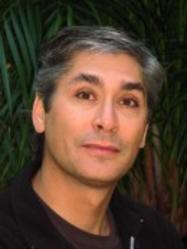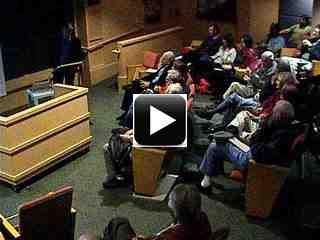Fifty years ago, Sputnik's launch started the Space Age. Teams of
citizen-scientists, including teenagers, teachers, and long-time
amateur astronomers, scanned the night sky in hopes of spotting it.
As members of Moonwatch, a program initiated by the Smithsonian
Astrophysical Observatory in 1956, these amateur scientists
contributed to what became the twentieth century's grandest science
project. Largely forgotten today, Moonwatchers played a crucial role
at the start of the Space Age. McCray places their story within the
context of 1950s Cold War culture and suggests how the public's
passion for science might be stimulated once again.

W. Patrick McCray, a professor of history at the University of California,
Santa Barbara, specializes in American science during the Cold War. He is
also a researcher at UCSB's Center for Nanotechnology in Society. He
received his Ph.D. from the University of Arizona in 1996. He is the
author of the forthcoming book Keep Watching the Skies: The Story of
Operation Moonwatch and the Dawn of the Space Age, to be published by
Princeton University Press. His other publications include Giant
Telescopes: Astronomical Ambition and the Promise of Technology (Harvard
University Press, 2004) and Glassmaking in Renaissance Venice: The
Fragile Craft (Ashgate Publishing, 1999).
Introduction by David Gross
 Other video options
Other video options
To begin viewing slides, click on the first slide below. (Or, view as pdf.)
![[01]](tn/01.jpg)
![[02]](tn/02.jpg)
![[03]](tn/03.jpg)
![[04]](tn/04.jpg)
![[05]](tn/05.jpg)
![[06]](tn/06.jpg)
![[07]](tn/07.jpg)
![[08]](tn/08.jpg)
![[09]](tn/09.jpg)
![[10]](tn/10.jpg)
![[11]](tn/11.jpg)
![[12]](tn/12.jpg)
![[13]](tn/13.jpg)
![[14]](tn/14.jpg)
![[15]](tn/15.jpg)
![[16]](tn/16.jpg)
![[17]](tn/17.jpg)
![[18]](tn/18.jpg)
![[19]](tn/19.jpg)
![[20]](tn/20.jpg)
![[21]](tn/21.jpg)
![[22]](tn/22.jpg)
![[23]](tn/23.jpg)
![[24]](tn/24.jpg)
![[25]](tn/25.jpg)
![[26]](tn/26.jpg)
![[27]](tn/27.jpg)
![[28]](tn/28.jpg)
![[29]](tn/29.jpg)
![[30]](tn/30.jpg)
![[31]](tn/31.jpg)
![[32]](tn/32.jpg)
![[33]](tn/33.jpg)
![[34]](tn/34.jpg)
![[35]](tn/35.jpg)
![[36]](tn/36.jpg)
![[37]](tn/37.jpg)